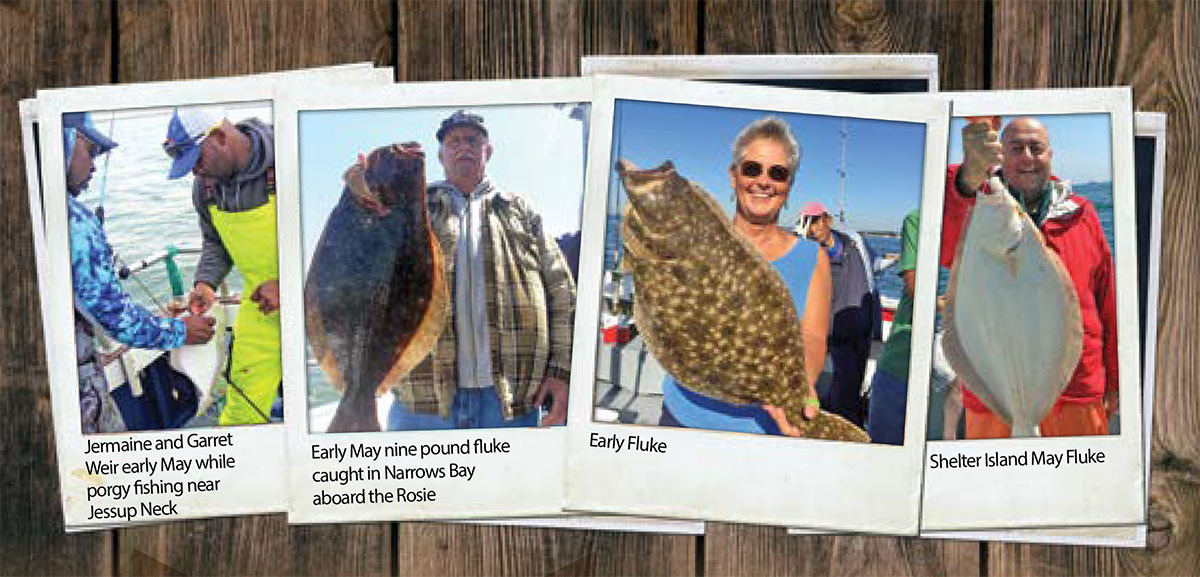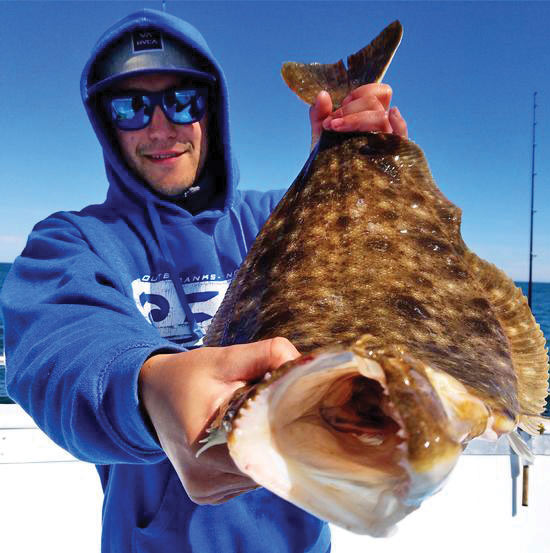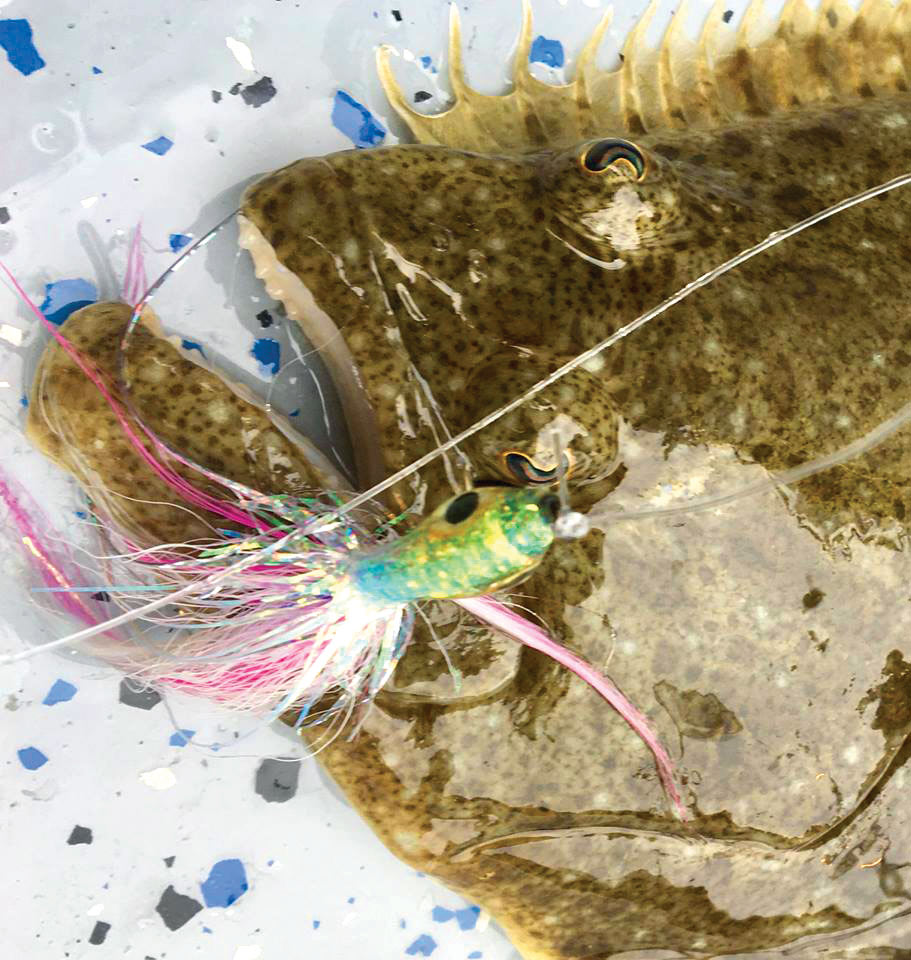
Some of the best fishing of the season takes place in the opening weeks if you know where and how to target the early arrivals.
It was a brisk mid-April morning that found me bouncing a pearl white, 4-inch Fin-SFish on a 1/2-ounce lead head jig along the banks of the Shinnecock Canal. I was hoping to convince a weakfish or two that my artificial soft plastic was better than those big, busting with roe spearing, that were gathered in the canal seeking warmerwater or looking for a tidal creek inside Flanders Bay for a place to drop their eggs. With the current easing, the locks still had a good 15 minutes before they would shut tight for the next six hours. As hard as I tried to intercept an early season yellowfin headed for the Peconics, it didn’t happen. Either they had no interest in the plastic bait, or they just hadn’t arrived yet. All was not lost however since as the current went slack and the locks slammed shut, my Fin-SFish caught the interest of something on the bottom. Judging by the way it attacked the bouncing jig and the ensuing battle, I was fairly convinced it had to be a fluke, and a good one at that. It turned out to be between 3 and 4 pounds, and for the next two hours I was able to dupe two more would be keepers had the season been open. As it was, all three were released unharmed along with some very spunky sea robins. Not bad for mid-April and a great way to spend a few hours of fishing just a few steps from the car with hardly a soul around.
It Starts Underground
By the start of May, many anglers who live on Long Island overlook the opportunity of nailing fluke within minutes of home or work. Whether it be from shore or boat, rest assured there are fluke along many shorefronts. If you’re wondering why, with ocean, Soundand bay waters still being a bit on the chilly side, the shallow shorelinescan be productive so early in the season,the answer lies with underground springs and feeder creeks, and the warmer water they generate. It’s paramount to understand that feeder creeks and underground springs are fed by small freshwater coastal streams of groundwater origin on the mainland, which is spread quite liberally across Long Island. These areas include tidal creeks and marshes feeding into south shore bays and north shore harbors. The ground water seeping into the bays and harbors is a solid 57 degrees year round, making it ideal early spring habitat when you factor in the shallow, dark bottom that warms quickly on sunny days. The resulting warmer water in the marshes and creeks attracts forage fish, particularly small grass shrimp and spearing looking to spawn, which draws the attention of early arriving fluke.
A Waiting Game
It also helps to understand that fluke move back to the coast of Long Island from the deep, warmer waters of the Continental Shelf well before the New York fluke season debuts. Many of the larger fluke remain in the ocean inside the 20-fathom line through the spring, summer and fall, or in the deep water of the Sound for the same duration. They also tend to gather during the early spring to early summer inside the Peconic Bay Estuary, especially in the waters that surround Shelter Island. The fish remain pretty much dormant until the spring invasion of squid puts them on the feed. In the meantime, smaller and more aggressive fluke enter the bays and harbors for easy pickings of large female spearing that drop their eggs in the feeder creeks and the surrounding waters.
Early Hotspot

The classic example of an early season shore bound hot spot is the Shinnecock Canal, gateway to the western end of the PeconicEstuary, which is actually Flanders Bay, and the connection to Shinnecock Bay. The tidal flow at this juncture is controlled by three sets of locks that remain closed as the tide floods in Shinnecock Bay. According to Capt. John Capuano of the Hampton Bays based open boat,Shinnecock Star, as the locks open at the start of the outgoing tide, all the warm water of the Peconics that flushes through the canal and into Shinnecock Bay creates a warm water trail along the east side of the bay that draws fluke as early as mid-April. At the same time, water ebbing out of the Quogue Canal along the west end of Shinnecock Bay is also warmer as a result of the feeder creeks and springs that spill out from the marshes and mainland. Likewise, springs from the countless marshes and creeks in the South Shore bays, or in the backs of North Shore harbors, will generate similar conditions. Find the warm water and the bait, and you’re certain to find fluke.
Keep It Light
Tackle selection is simple – keep it light. Fluke can be line shy, especially in the early going as they are still a bit dormant and can be surprisingly fussy at times. Spinning orbaitcastingoutfits matched to 10-pound braid is more than sufficient when fishing these shallow water areas. I like to tie an 8-foot length of 20-pound fluorocarbon leader directly to the main line via an Albright Knot. Fluorocarbon is 99 percent transparent under water and is worth the extra few cents more than mono. If you are not comfortable using braid, copolymer lines work well in cold water and are also a lot harder to detect in shallow water, which makes it a solid alternative.
Small and Slow
Simply put, small natural or artificial baits are the way to go at the start of the season. Fluke are left with very little food choices in the early going, relying primarily on sand shrimp and spearing. As a result, bouncing a 3-ounce jig in front of them just isn’t going to cut it. You may be able to convince the shorts or the small guys to grab it, but come May, it isn’t going to fly for the big boys. You’ll want to go as light as possible if you’re going to jig bucktails and leadheads with soft plastics, preferably between 1/8 to 1/2ounce. I would suggest not exceeding 1 ounce when fishing in water less than 10 feet as both bucktails and leadhead jigs lose some of their appeal in the larger sizes. I’ve had really good success with fluke on Spro’sPrime bucktail jigs the last couple of seasons. White, pink, glow, chartreuse, spearing blue and sand eel green are some of the more productive colors, however white, glow and spearing blue in 1/4 and 3/8 have been especially productive early in the season.
You may want to sweeten up these jigs with either a small, thin strip of squid or a small spearing. Don’t overdo it with globs of bait on the hook, otherwise it will go untouched. The 2-inch Berkley Gulp Alive swimming mullet in white makes a good alternative to the natural bait. As for soft body plastics, there are myriad choices at your favorite tackle shop. Some of the more effective soft plastics for fluke thatwill also draw strikes from weakfish and stripers, are the 4-inch Fin-SFish in white and Arkansas silver, 4-inch Bass Assassins in albino shad with red tails and also in white, Tsunami 2-inch swim shads and Berkley Gulp 6-inch silver mud sand eels. All these baits should be fished without being sweetened with natural baits, and will work just fine using plain leadheads under an ounce. Try employing just enough weight to lightly bounce the bottom. Doing so will result in a more natural presentation when bounced slowly along the bottom, which should help you bring a few quality fluke to the net.
Teasers Work
Teasers tied 18inches above the bucktail via a dropper loop will often keep pace with, and sometimes exceed, the productivity of bucktails and soft plastics. Whether fishing shallow or deeper waters, Tom Teasers have been king of the hill throughout fluke season, especially in Shinnecock and the Peconics. Captains John Capuano and Deena Lipmann of the Shinnecock based open boat Shinnecock Star witness on a daily basis how well these teasers work their magic as the day’s pool fish is often decided by fish caught on a Tom Teaser. Tom Teasers are custom handmade and can only be purchased from Captains Deena or John aboard the Star. If you are interested in adding a few of these to your arsenal, give Captain John a call at 631-728-4563, or see Deena at the boat once the season begins.

The proper technique to fishing jigs is to imitate a distressed baitfish by bouncing the jig with short hops constantly along the bottom. However while the water is cold, you may want to slow the bouncing a notch or two. Fluke are not as aggressive as they are later in the season. Therefore allow a second or two when you feel those light taps or bumps to set the hook as more often than not, the big fish are the light hitters.
So this spring, if you are looking for some early fluke action but not sure where to start, why not narrow it down to the warm waters of the back bays? Many fish in the 6- to 9-pound range come out of these waters early in the season, but they will not stick around long. Remember to practice self-restraint and when it comes to the future of our fisheries, keep only what you need. As this is being written, there is a chance, however slim, that this season’s fluke regulations may be relaxed slightly, which might translate into a slightly longer season. At worst, we are likely looking at status quo, which is four fish at 19 inches from May 4 to September 30. As the end of April draws near, be sure to check for any changes in the size and bag limit, and don’t forget to register for the free marine registry (1-866-933-2257 or www.dec.ny.gov/) which must be renewed every year.



